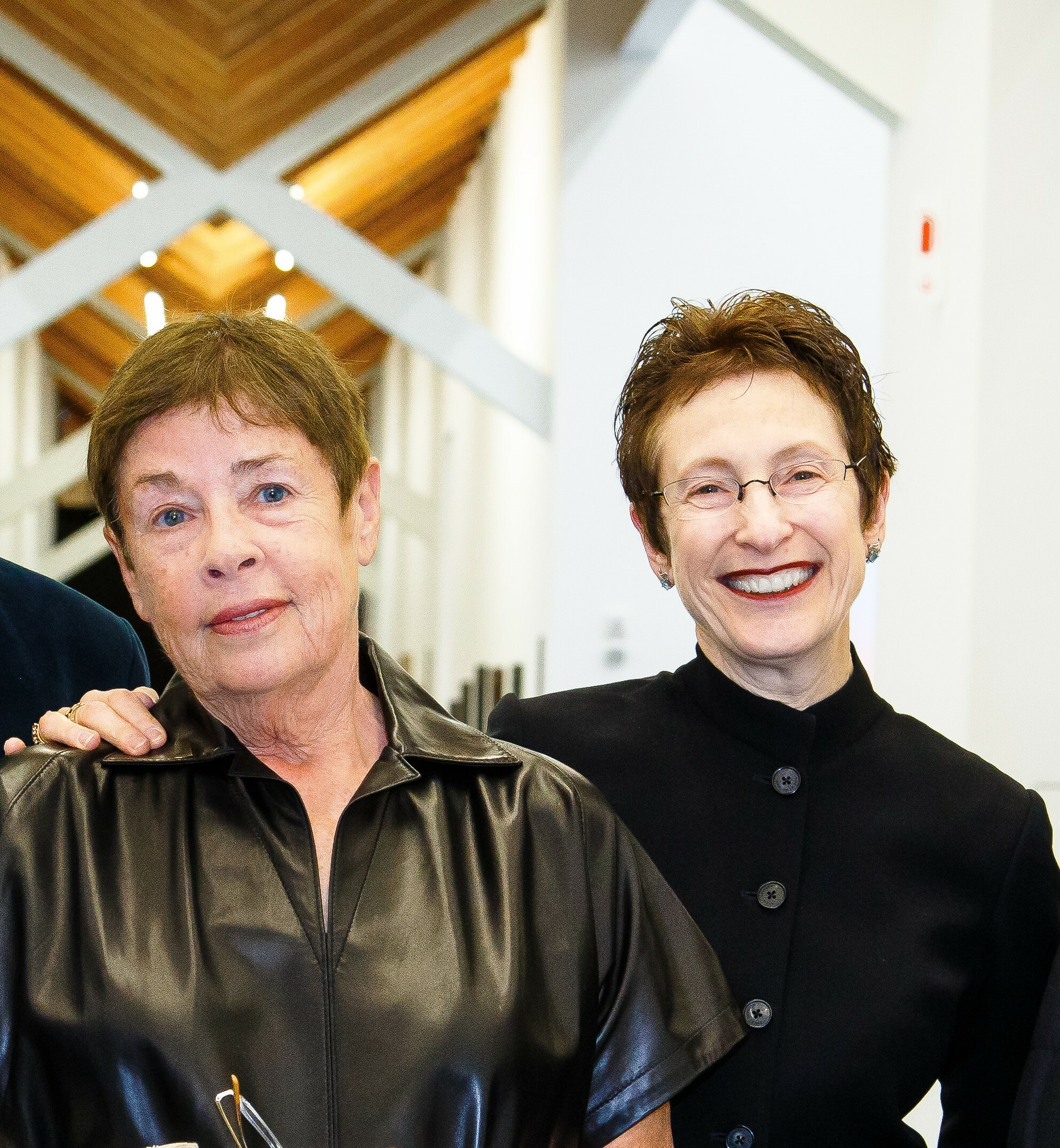
Over the course of her long career, artist Jennifer Bartlett demonstrated a wonderfully keen eye for innovation, and her work continues to be an inspiration for the next generation of artists, especially women, making their mark in the ever-broader world of contemporary painting.
Like many of her generation — friends and colleagues with whom she studied at Yale including Chuck Close, Brice Marden, Rackstraw Downes, Nancy Graves, Robert Mangold, Janet Fish, Don Nice — Bartlett, who died in Amagansett on July 25, practiced art as a no-holds-barred pioneer with a wholly unique voice.
From her ground-breaking, monumentally scaled installation “Rhapsody,” created from more than 900 1-foot-square steel plates that debuted at Paula Cooper gallery in 1976, to the glorious series of “Amagansett” land- and sea-scape paintings she created in 2008, to the close-ups of leaves and flowers in “Rose or Path” from 2011, Bartlett mined the intersections between nature and human constructions, moving fluidly across traditional boundaries. Her art never ceased to be compelling, intellectually curious, and above all, instilled with a sense of beauty and profound wonder.
I first became aware of Bartlett’s work in the mid-1980s as a young curator in charge of contemporary art at the Corcoran Gallery of Art in Washington, D.C. There was something completely fresh, alive, and transformational about her approach to artmaking. I followed and admired her work for years, but didn’t meet her personally until I moved to Southampton to join the Parrish Art Museum as director in 2008. I was thrilled to discover that Bartlett was such an integral part of this active and storied artists’ community. My first studio visit was to her Amagansett beach house. She was warm and welcoming, and also very funny — she had a certain kind of self-awareness that allowed for both a humorous and serious take on the world.
She showed me her ingeniously invented, novel working arrangement — essentially a kind of outdoor studio in a box, what she described as the “suitcase wall.” This approach to problem solving, in this case how to have an outdoor studio that could be folded up and put away at the end of the day, governed her in everything she accomplished, from her early days right out of art school to her groundbreaking approach to painting, moving effortlessly from the pure abstraction of her grid-based geometry of the plate paintings to the striking beauty of her paintings of the gardens with which she surrounded herself, and later the monumentally scaled paintings of the ocean and the beach in and around Amagansett.
For someone who has staked out a career-defining territory in the realm of geometric abstraction, it was fascinating to learn just how dedicated and attached she was to cultivated gardens, which gave her rich creative stimulation, and were deeply important to her sense of physical and emotional well-being. Landscape, light and the architecture of plantings were as elemental to her ordered, theoretical approach to abstraction as they were to her depictions of nature.
Bartlett’s interests and inspirations ranged from such wide-ranging fields of inquiry as literature, mathematics, horticulture, film and music. She often used the phrase “This interested me,” coupled with the question “What if?” The “what if” question, she recalled to me, underscored the sense of curiosity she had cultivated since her childhood pseudo-science experiments: “What if I put the baby lotion in with the toothpaste?” This became a guiding principle that drove her artistic process for more than 45 years.
In 2014, Klaus Ottmann, the Parrish adjunct curator at the time, organized a large survey of her work, “Jennifer Bartlett: History of the Universe — Works 1970-2011.” The 22 mostly large-scale works aptly showed the full range of her artistic periods, from plate pieces to combinations of paintings and sculpture, to diptychs and triptychs painted on canvas. All came together to demonstrate the philosophical foundation of Bartlett’s creativity, her explorations of the elemental conditions of human life.
Bartlett advanced the boundaries of painting and sculpture, but her accomplishments extended broadly. She authored a critically acclaimed autobiographical novel, “History of the Universe;” designed furniture and glassware as well as gardens; and collaborated with the eminent German filmmaker Volker Schlöndorff on sets and costumes for film and opera.
Bartlett was a humanist with a sharp wit and a keen eye. Like the Renaissance artists, she defined her artistic self as a conceptual personality seeking to understand life at its deepest level, and to provide answers needed to create an ethical ground for one’s life. Her work continues to ask the same questions first raised more than 200 years ago by the German philosopher Immanuel Kant: What can I know? What ought I to do? What may I hope for?
Bartlett was a great friend and colleague, willing to share whatever was on her mind. Her contributions to American art history are legion, and she will be sorely missed.
Terrie Sultan served as director of Parrish Art Museum in Water Mill from 2008 to 2020.